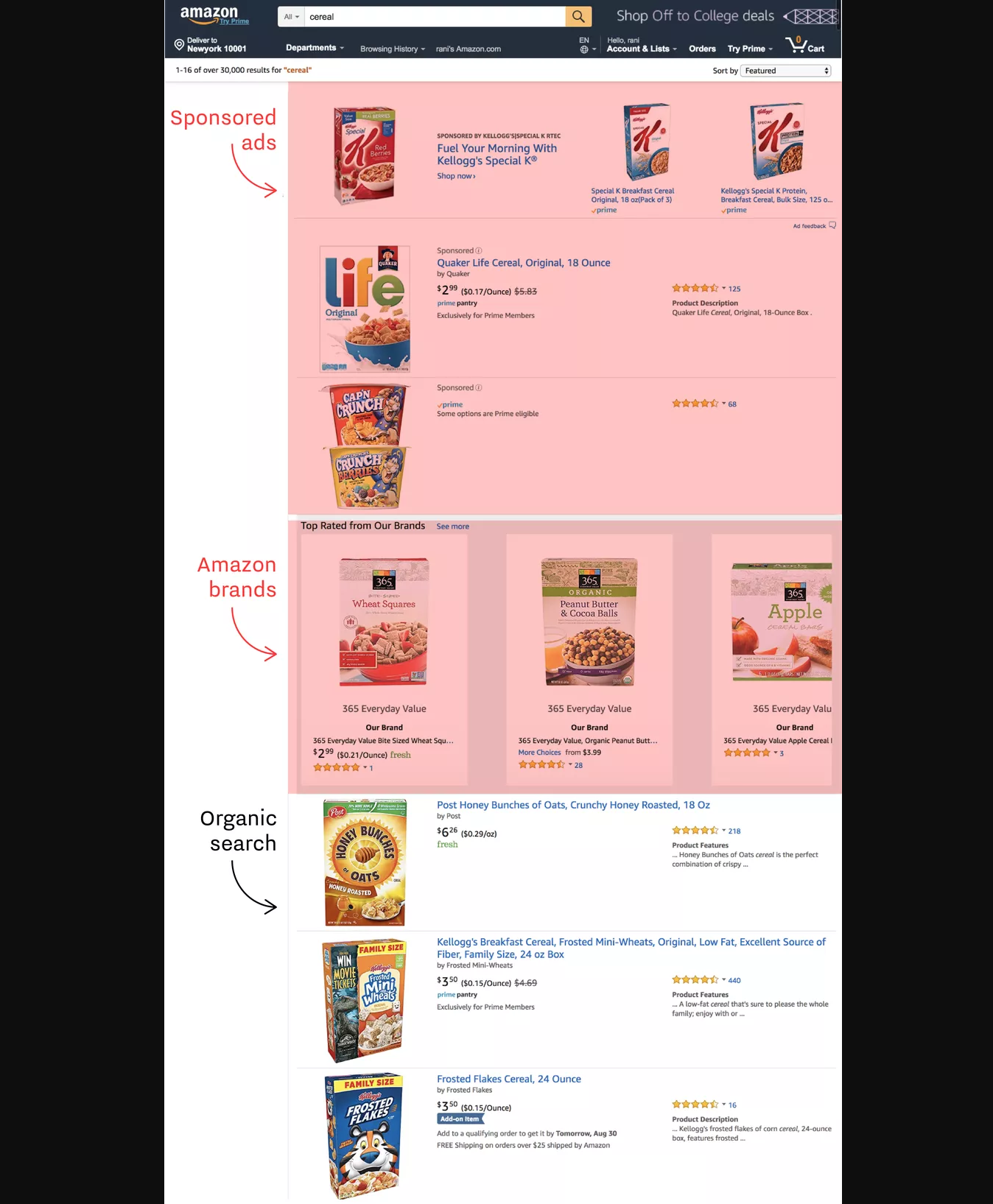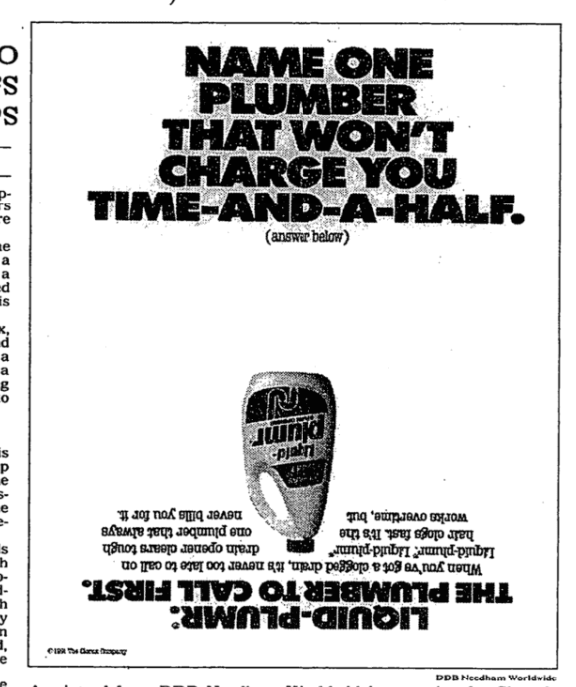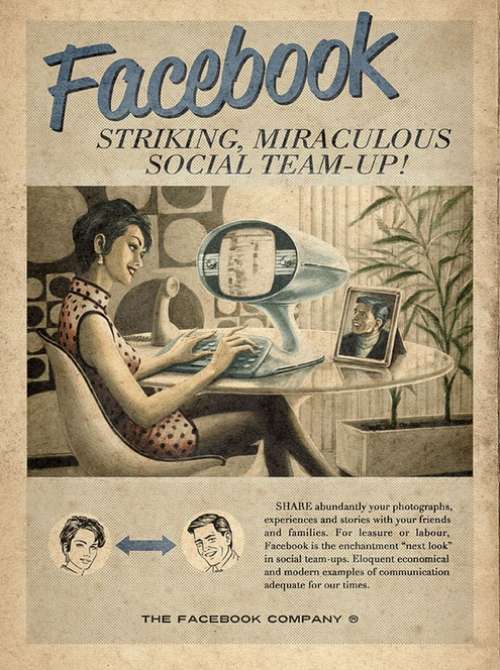Squeezing ads, getting creative and then start irritating – eCommerce media and the lifecycle of mass media

If you needed more signs that ecommerce media is becoming mass media read on.
We already know that Amazon generated 2.5 billion dollars in the last quarter from selling ads (that’s 5% of its GMV!). We also know that Amazon is already the No. 3 ad seller in the U.S (3rd to Google and Facebook) and that its ecommerce media business will soon surpasses AWS cloud services as its biggest profit center. We also know that Etsy’s fast growth in the last several quarters comes from promoted listings ads and that Walmart.com and all the other retailers are also jumping on the ecommerce media bandwagon offering promoted listings and other types of promotions.
If you still need proof that e commerce media is rapidly becoming mass media here are 3 other signs (and a short history lesson).
Mass media lifecycle
The life cycle of every new media usually starts with a slow adaption by early adaptors (usually the smart advertisers like P&G for example – read more in this post) followed by massive demand, which requires to increase the supply and find “creative” ways to squeeze in more ads until it starts irritating the customers and the advertisers (and becoming less effective).
Now let’s get some examples and see how far Amazon and eCommerce media in general have gone down this road.
Squeezing in ads
When Amazon introduced Sponsored Products Ads, their appearance was minor (in terms of position and quantity). It didn’t take long till it became massive.
Today, the first three results, which take up the whole screen above the fold, are sponsored placements that appear as search results.

Amazon’s focus on sponsored placements is transforming the ecommerce platform into a ‘pay to play’ arena where sellers and brands must advertise to stand out (You can read this report from last week if you don’t believe us).
Getting creative
In January 2000, radio listeners started sending emails to Rush Limbaugh, a daily radio show host, asking why there were more commercials on his three-hour talk-radio show.
Rush didn’t know what they were talking about as he was talking for the same amount of time every day as he did before.
It turned out that the radio station used a new kind of digital technology to literally snip out the silent pockets between words he was saying, shortening the pauses and generally speeding up his speech pace.
By doing that the station had more time for commercials.
8 years earlier, trying to capture the attention of ad-weary consumers, advertisers and publishers started using a new gimmick: upside down ads – The top half was printed right side up, while the bottom half was printed upside down.
The goal was to catch the eye of a reader rapidly rifling through the pages of a magazine or newspaper, persuading him or her to pause long enough to discover what lurks down under.

These were the print equivalents of the intrusive production techniques used in broadcast commercials and the TV commercials that used foreign languages to catch the ear.
At the beginning these ads did get the reader’s attention but soon after they became apparent.
Back to present days
Online retailers are constantly looking for creative ideas that will get them more ad space and more clicks.
Amazon, for example, stretched Sponsored Product Ads beyond search result pages and added it to customers’ baby registries alongside the actual products requested by people, making them look as if they were a part of the Wishlist, causing many people to unwittingly purchase gifts from these ads.
Irritating the customers
The next phase in the lifecycle of mass media is that it starts getting on people’s nerves.
“The complaint sometimes heard that there are too many advertisements—is equally unfounded. It has been explained a thousand times that without the advertisements the collection of the news would be impossible unless a far higher price were charged for the paper than any reader would dream of paying. “
This quote is from an editorial that was published on the New York Times in June 1925.
After answering people who complained that the newspaper had too many items and was too long to read, the writter also related to the concern of too many ads, explaining the need for the ads to lower the paper cost.
The second thing he said about the ads was this:
“Besides, the advertisements themselves in many cases, are, and in all cases ought to be, news. “
An anecdote for those who think that Facebook, Outbrain or Taboola invented native ads.
Turns out that in 1925 ads had to be “news”.

In 1931 radio manufacturers got worried about “the overabundance of advertising on the air”.
They wanted the broadcasters to find a way to stop commercials, because they were getting letters from the public saying that they were not using the radio as much as they used to because there were too many commercial on the air.
“Phony” ads
The creative tools that the publishers and advertisers were using to get attention in a too many ads environment also irritated the customers.
“Too many advertisements are handsomely dressed smoothies, superficial and boastful. Phony ads may win attention with clever copy, arresting headlines and smart typography, but if they fail to sell the “good thinking” behind a product they are a “poor bargain” for the advertiser and leave the reader with a feeling of having been “tricked”
These were the words of John Orr Young, pioneer advertising man at the “Democracy Awards” dinner held by the advertising chapter in June 1948.
In 1963 the television viewers believed that there were too many commercials, accounting for 10-20 percent of air time and that commercials interrupt programs too often.
These were the findings of a book called “The People Look at Television” that was written that year by Dr. Gary A. Steiner, associate professor of psychology at the- University of Chicago’s Graduate School of Business.
Although most viewers were critical of television commercials, Dr. Steiner noted that the public displayed no overwhelming disposition to endorse a system of payTV in which all ads would be eliminated. Only 24% of the respondents agreed that “I’d rather pay a small amount yearly if I could halve television without commercials.”

In the same year I. Newton N. Minow, chairman ‘of the Federal Communications Commission, proposed a law that would bar television stations from using too many commercials saying there are too many.
In 2000, after the creative “time machine” started shortening radio shows, adding more commercials, even the broadcasters and show hosts realized that they were throwing way too many commercials at the listeners and as Rush (the radio show host) said:
”Nobody is going to listen to a radio program where 30 of every 60 minutes is advertising,”.
Back to present days
Has eCommerce media reached the point of irritating shoppers?
The best way to check it in this case is empiric – Does the sponsored product ads generate sales or not? If Sponsored product ads and promoted listings are not relevant or helpful for the shoppers, the result would be that shoppers would not click on them and definitely won’t buy the products that they are promoting so the conversion rate of these product ads would be lower than the organic products.
The truth is that this is not the case – at least not when it comes to Sponsored Product ads.
Sponsored Product Ads CTR’s and conversion rates are very high meaning that they are doing a good job in giving the shoppers what they want and not only what the advertisers want.
According to the “Amazon shopper behavior study” that was published by CPC strategy earlier this year 90% of Amazon shoppers either ‘don’t notice ads’ on Amazon or find them ‘useful and relevant.
Surly the baby registries incident, in which Amazon was sneaking sponsored listings in with the products the expectant parents had chosen, irritated shoppers who found themselves mislead to buy products that they weren’t supposed to buy, but this is not the typical case.
Some might say that the fact that Amazon and the other retailers top up the first search result pages with ads can irritate shoppers who’d rather see products with the best prices or ratings than those with the biggest marketing budgets and that there are already signs that Amazon relentless push to discover new and novel ways of monetizing its customer relationships threatens to break the basic experience of online shopping as BuzzFeed recently declared, Amazon is “falling short of its basic business: running a website that sells stuff.”
But for now it seems like the ads are still usually fulfilling its purpose also for the shoppers and helping them find what they want.
Irritating the advertisers
In 1963, when the “reduce ads rule” was conceived, it wasn’t only the viewers who weren’t comfortable with the increase of TV commercials.
John W. Burgard, vice president for advertising of the Brown & Williamson Tobacco Company, complained in an article back then that the vast number of commercials had curtailed the effectiveness of TV as an ad medium.
3 years later in 1970 the number of commercials went up as a result of the increase in the cost of interconnecting TV stations by the American Telephone and Telegraph Company.
At that point even the broadcasters started worrying that at some point soon the audience will get turned off by too many commercials and might reduce or even stop watching TV at all. In that case the ads would definitely won’t be effective any more.
Shrinking the radio’s content in 2000 for adding more ads also irritated the advertisers who were saying that jamming too many ads is one of the first places commercial overload becomes apparent – “no advertiser wants to be sandwiched in between six other commercials” (6 commercials? Since then the numbers did go up).
Back to present days
Has ecommerce media reached the point of irritating advertisers?
Well, so far, the advertisers are far from complaining.
Surely the CPC goes up as more advertisers get into the game, but eCommerce media is still offering the best ROI compared to all other options.
This is the reason why more and more advertisers take much of their performance budget from Google and other places and move it to eCommerce media.
Check out every Merkle report from the last year and see the trend.
The ad dollars are moving in one direction – Towards the eCommerce media.
resources:
https://www.inc.com/jeff-bercovici/amazon-advertising-customer-trust.html
https://timesmachine.nytimes.com/timesmachine/1948/06/17/85276997.html?pageNumber=42
https://timesmachine.nytimes.com/timesmachine/1925/06/20/101670009.html?pageNumber=12
https://www.nytimes.com/1931/11/22/archives/listeningin-air-good-for-long-distance-honolulu-hears-the-rhumba.html
https://www.nytimes.com/1992/02/21/business/the-media-business-advertising-when-up-is-down-does-it-sell.html

